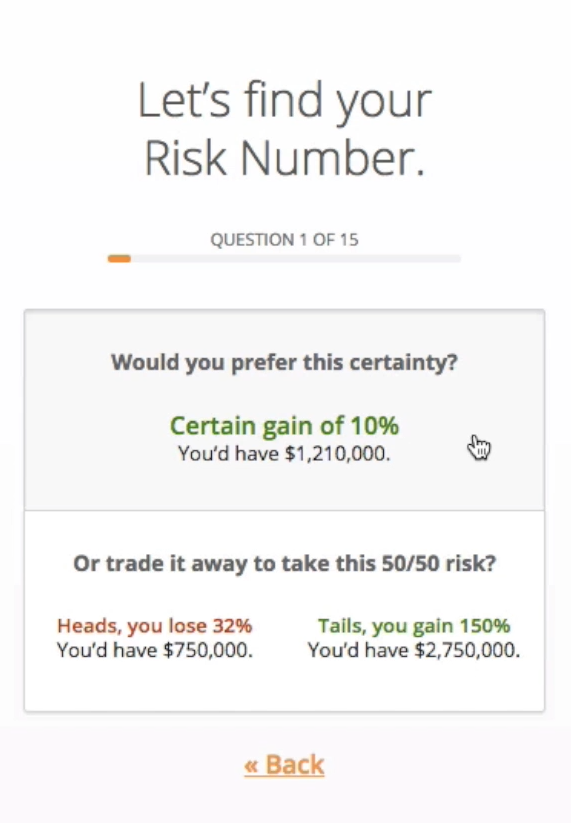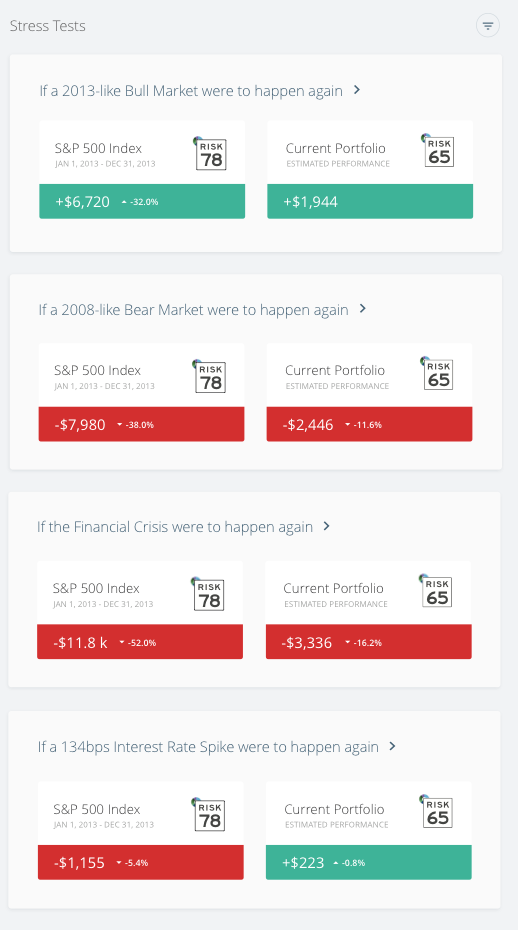Related Blogs
January 11, 2019 | Michael Reilly
Christmas Eve taught a lot of investors an important lesson this year.
The lesson was this: if you want to avoid mistakes when market volatility rears its head, you’ve got to measure your risk carefully.
When stocks dipped rapidly towards the end of 2018, some investors were inevitably pushed past their breaking point and bailed, missing out on a strong rally and the strongest start to the year since 2006.
It’s hard to blame them. If you were checking the news around that time you were likely to see lots of fear-mongering in the headlines. Nearly everyone was talking about a new bear market, or another dot-com style crash.
It’s hard to resist the urge to click when you see doom and gloom predictions like that, which is exactly what the news outlets count on.
The thing is…if you’ve properly measured your own level of acceptable risk, and structured your accounts to match, market volatility like this shouldn’t be cause for panic. Especially these days.
In times past, risk management was a lot trickier. It involved a lot of complicated formulas and math skills you probably hadn’t used since grade school.
Even the “For Dummies” book on measuring portfolio risk opened with this lovely equation…
rs = rf + βa(rm – rf)
If that’s the “For Dummies” version, I’d hate to see what the “experts” were using.
Of course, equations like this are still used in risk evaluation, but everything is done automatically by computers. After all, we all have computers in our phones that are tens of thousands of times more powerful than anything available when these risk measurement equations were first developed. And they’re getting exponentially faster every year.
These days, risk evaluation and risk management can be done in minutes, no math skills required.
Which is why it’s so surprising that any investor puts themselves in the position to enter “bail out mode.”
To illustrate what I’m talking about, I want to walk you through the way we measure risk at Rowe Wealth. If you’re one of our clients, this will look familiar.
There’s two important parts of our risk evaluation strategy: measuring your own level of acceptable risk, and measuring the risk inherent in your portfolio.
In order to evaluate your own risk tolerance, we use something called the “risk number” system.
It’s quite easy to understand. When you sign up with Rowe Wealth, one of the first things we do is have you take a short quiz. It only takes a few minutes, and involves you answering a series of questions like this…

At the end of the quiz, you’ll receive a number between 1 and 100. A lower number means you’re more conservative when it comes to risk, although that can be a good thing! If you answer the questions honestly, you’ll end up with an accurate estimate of how low your accounts can dip before you’ll enter that precarious panic mode.
At this point, we’ll also scan your current portfolio into our software, which will then determine your portfolio’s own risk number. If all is well, these two numbers will be closely matched.
However, it’s not uncommon for investors to discover that their risk number is significantly lower than their portfolio’s, meaning that they’re risking far more than they’re comfortable losing. At this point, we might recommend a switch to one of our models with a risk number that more closely matches the client’s.
Once we’ve matched your level of risk to your portfolio’s, we’ll also run your portfolio through a series of stress tests, which shows you how your current holdings would perform under both booming bull markets and a financial crash. If these results aren’t to the client’s liking, some further rebalancing may be required.

Now, information like this is great insurance against market stress. When the market takes a dive, you can always return to this data. If you know even another bear market isn’t going to ruin you, it makes it a lot harder to worry about a little volatility.
In a world where almost every mainstream financial publication is going for these “shock value” headlines about crashing markets, this is valuable information. As a long term investor, bailing at the wrong moment is one of the most harmful scenarios. As we’ve seen over the past few weeks, dips in the market are often perfect buying opportunities and a chance to capture some of your biggest gains.
If you’re not already a Rowe Wealth client, and you’re interested in finding out your own Risk Number and that of your portfolio, shoot us an email at info@rowewealth.com so we can set you up with a link. It’s completely free and carries no commitment.
Remember, a smart investor knows their portfolio inside and out, and it doesn’t have to be difficult or time consuming to gather all the information you need.
When it comes to the stock market you can never predict the future, but you can evaluate the likely outcomes and plan accordingly…and that’s a powerful tool to have at your disposal.
Tags

Get Our FREE Guide
How to Find the Best Advisor for You
Learn how to choose an advisor that has your best interests in mind. You'll also be subscribed to ADAPT, Avalon’s free newsletter with updates on our strongest performing investment models and market insights from a responsible money management perspective.

